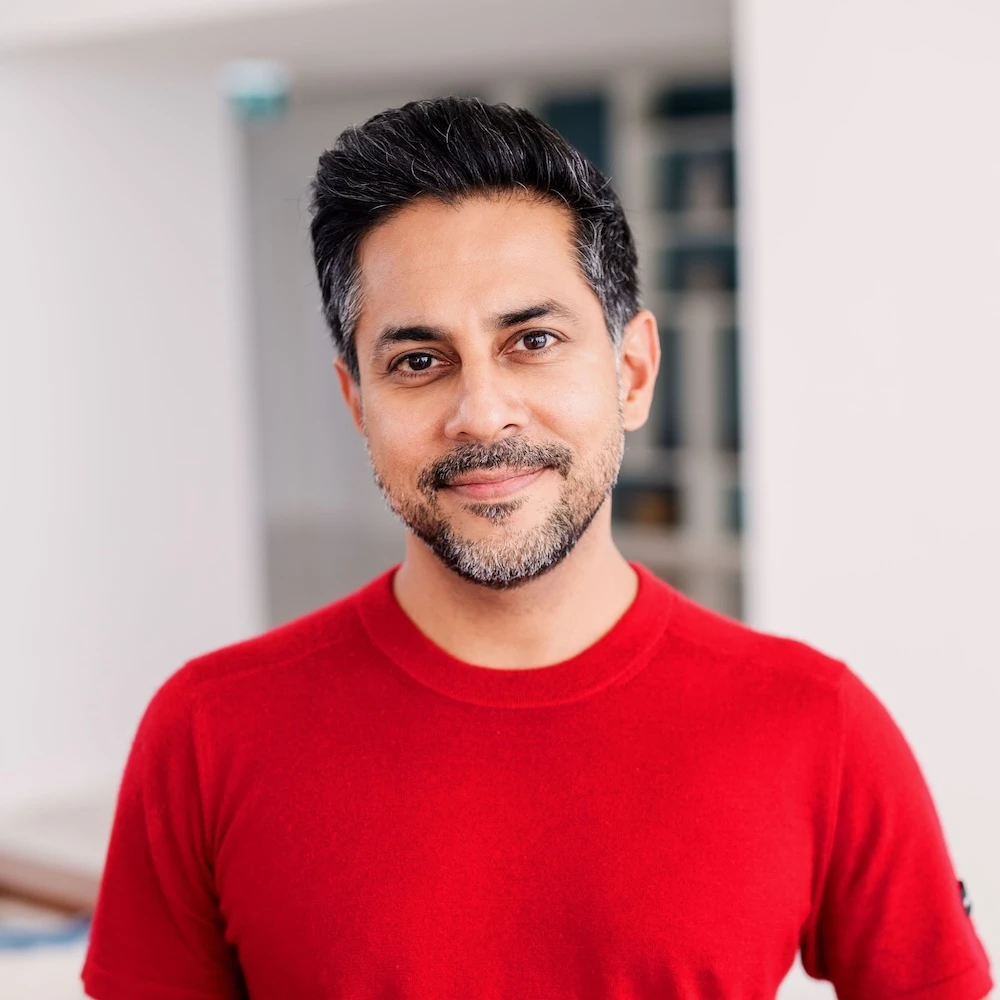It’s been a long, stressful day. Your mind is racing with all the “to-dos” that are yet to be done. And kicking off your shoes to settle into a relaxing evening seems highly unlikely.
You’re desperate for a way to hit the “reset” button for some much-needed mental and emotional relief.
Going off to slumber land is definitely an option. But have you ever tried non-sleep deep rest?
Better known as NSDR, this approach is gaining popularity for good reason. It’s a go-to solution for those seeking to rejuvenate their minds and bodies without actually falling asleep.
“If you get tired, learn to rest,” goes the Irish proverb. And NSDR is a great way to do so.
What is NSDR?
Coined by Dr. Andrew Huberman, NSDR simply means “non-sleep deep rest.” It’s an umbrella term, according to the neuroscientist and podcast host of the Huberman Lab, for different methods to support better brain and body function.
You may already be familiar with the methods—they’re things like:
- Meditation,
- Yoga Nidra,
- Short, shallow nap,
- Lying quietly with your eyes closed, or
- Hypnosis following NSDR scripts.
Non-sleep deep rest is a powerful tool that can allow you to control the relaxation state of your nervous system and your overall state of mind.
— Dr. Andrew Huberman, neuroscientist and podcast host of the Huberman Lab
The approach, as its name suggests, places you between a state of wakefulness and sleep. And this allows your mind and body to get the relaxation and rejuvenation they need.
“It turns out one can recover some of the neuromodulators,” explains Dr. Huberman in one of his podcast episodes. “And, more importantly, the processes involved in sensation, perception, feeling, thought, and action.”
He highlights one study conducted at a university in Denmark looking into how meditation can support this. The researchers found that NSDR, particularly Yoga Nidra-type meditation, allows neuromodulators like dopamine to reset the brain’s striatum, the area involved in motor planning and execution.
So why’s this important?
Imagine your mind as a smartphone that’s been running multiple apps all day long. The battery is draining, and the performance starts to lag.
You could wait for the phone to completely run out of power. However, there’s a faster way to recharge and boost its performance: plug it into a power bank for a quick top-up.
NSDR is like that power bank. It gives your mind a much-needed boost when you’re feeling drained without having to fully shut down or “power off” into sleep.
Benefits of NSDR
To say the benefits of NSDR are aplenty is an understatement. When you practice any one of the techniques on a regular basis, you can tap into a range of positive effects, ultimately improving your overall well-being.
Here’s a closer look at how the NSDR protocol can help you:
- It reduces stress and anxiety. Research has shown that practicing mindfulness techniques, like meditation and Yoga Nidra, can lower cortisol levels, the hormone responsible for stress.
- It improves memory and learning. Dr. Huberman suggests that taking a break for NSDR, such as a short nap or Yoga Nidra, after learning something new can benefit you in two ways: helps improve your memory and helps you understand the information. One study found that even a very short nap of six minutes can help you recall facts and knowledge.
- It enhances focus and concentration. According to a 2010 study, participants in an eight-week mindfulness meditation program saw significant improvements in their attention and cognitive abilities.
- It increases emotional resilience. Based on a 2012 study, when you allow your mind and body to go into deep relaxation, you’re better able to cope with stress and emotional challenges.
- It helps improve sleep quality. While it doesn’t really replace a full night’s rest, NSDR can help you make the most of your downtime, contributing to better sleep later on. For instance, one study found that yoga can help you sleep better and reduce symptoms of insomnia.
No matter which form of NSDR you prefer, incorporating it into your daily routine can be a game changer for your mental and emotional well-being.

How to do NSDR
Life is a rollercoaster; sometimes it’s got its thrilling highs, and sometimes it’s got its dizzying lows. And at times, you just want to step off the ride for a second and catch your breath.
Enter NSDR: your pause button. It provides you with that necessary break from the constant whirlwind and allows you to recharge in your own tranquil sanctuary.
So how can you practice NSDR? There are several ways, but here are the three main techniques:
1. Meditation
When it comes to meditation, there’s not one specific way to do it. Rather, there are several forms.
According to Dr. Huberman, there are differences between traditional meditation and NSDR meditation.
You can think of traditional meditation as “directly tapping into and mediating improvements in the circuitry for focus and concentration,” as Dr. Huberman explains. NSDR meditation, he adds, is more about “modulating your brain and body state to allow you to focus and concentrate better.”
Here’s what it looks like side-by-side:
| Traditional Meditation | NDSR Meditation |
| A practice involving introspection to train attention and awareness | A state of deep relaxation and rest without actually sleeping |
| Achieve mental clarity and emotional calm | Rejuvenate the mind and body |
| Focuses on breathwork, thought, or particular object; continuously focusing when distracted | Defocusing and entering a deeply relaxed state between wakefulness and sleep |
| Mindfulness, concentration, loving-kindness, and so on | Yoga Nidra, hypnosis, NSDR scripts, dynamic meditation, and so on |
If you’re familiar with José Silva’s dynamic meditation (which you can find on Mindvalley’s The Silva Ultramind System Quest), NSDR meditation is very similar to it.
Vishen, founder of Mindvalley and trainer of the Quest, explains that this type of meditation is not about clearing your mind or focusing on your breath.
“It’s about using your mind to deliberately look at problems that you might be experiencing in life and make those problems disappear,” he says. “It’s about using your mind to create new evolutions of your life so you can make the planet better off for every living creature.”
2. Yoga Nidra
Don’t let the fancy name “Yoga Nidra” intimidate you—it simply means “yoga sleep.” This mindfulness activity is essentially like a power nap for your mind and body but without the actual snoozing.
There is research that shows how powerful Yoga Nidra can be. One study, in particular, found that it helps:
- Reduce stress, anxiety, insomnia, and post-traumatic stress syndrome,
- Psychosomatic disorders and physical diseases such as hormonal imbalance, and
- Pain in diseases, migraines, and non-communicable diseases.
You simply lie down for about 10 to 60 minutes, listening to a soothing audio script that guides you through a body scan and deep breathing. Think of it like having a personal relaxation coach talk you through a blissful, restorative experience.
3. Hypnosis with NSDR scripts
Let’s first get down to what hypnosis is. It’s a unique brain state, where you’re both deeply focused and super relaxed. This practice has been shown to help with stress, anxiety, and a range of illnesses. The results of a 2014 study suggest that hypnosis can be a useful tool for chronic pain management.
Now, NDSR scripts are guided audio scripts designed to help you reach a state of non-sleep deep rest. And when you combine it with hypnosis, it’s like getting a software update that helps your brain run smoother and more efficiently. All without having to call the IT guy.
Where can you find NDSR scripts? On YouTube, according to Dr. Huberman. “One that I particularly like is NSDR Made For.”
Bonus: NDSR protocol
Ready to dive into the world of non-sleep deep rest? There are a number of NDSR protocols.
However, Dr. Huberman has whipped up a fantastic NDSR protocol for you to follow. And it’s only a click away:
Frequently asked questions
Now, you might be brimming with curiosity about non-sleep deep rest. You can explore these frequently asked questions to clear up some common misconceptions, so you can become a true NSDR aficionado in no time.
Is NSDR the same as meditation?
No, they’re not the same thing.
As mentioned, NDSR is a tool to help you sleep better and relax. It involves defocusing to relax your body and mind.
Meditation, on the other hand, is a tool for increasing your attention and concentration. It requires you to actively focus on your breath and avoid distractions.
What can NSDR be used for?
The list of uses is extensive. Mainly, though, NSDR is a general tool for “enhancing your ability to sleep, and it’s a tool that you can use in order to compensate for, at least to some degree, lost sleep when you need to focus and concentrate,” according to Dr. Huberman.
It can also improve your emotional stability and make it easier to fall asleep at night. The best part about all of it is that it can be done for free, following the NDSR protocol.
How does NSDR help with sleep?
Sleep-wise, there are a few things NSDR can help with:
- Enhances your ability to sleep,
- Potentially replaces lost sleep,
- Improves your ability to fall and stay asleep at night,
- Provide restorative benefits during the day, and
- Resets your ability to be awake and attend.
It’s important to note that NSDR is not a replacement for sleep. However, when you’re unable to control your sleep, it’s a favorable option “to restore your ability to focus and concentrate for whatever purpose,” as Dr. Huberman suggests.
Bonus: Optimize your NSDR practice with tips from vishen
Because NSDR and José Silva’s dynamic meditation are very similar to each other, the way to approach the non-sleep deep rest practices is also similar.
Based on Vishen’s teachings of dynamic meditation from The Silva Ultramind System Quest on Mindvalley, here are a few tips to keep in mind as you start your NSDR practice.
1. Get into a position that’s most comfortable for you
When it comes to meditation (or any of the other non-sleep deep rest practices for that matter), people often think of saints or sages. According to Vishen, you can follow that style if you’d like, but it’s not necessary.
“You can simply sit in a chair with your arms on your knees—the choice is yours,” he explains. “This is a mental state, not a physical state.”
2. Pay attention to your body
You may just notice an itch here or a discomfort there. The good thing is, when it comes to NSDR practices, you don’t have to sit still.
“If you have an itch, go ahead and scratch the damn thing,” says Vishen. “Feel free to move your hands, to move your legs.”
3. Don’t fall asleep
The point of NSDR is to get deep rest without falling asleep. Even with the quick naps, the goal is to get you to the first or second stages of sleep.
“If you fall asleep, don’t beat yourself up about it,” he suggests. However, the next time you do the exercise, create more of a sense of discomfort, like crossing your legs during meditation or putting your hands in a different position.
4. Use a trigger
Imagine this: You lie down to take a 20-minute power nap. You close your eyes, toss and turn, and the next thing you know, it’s an hour later and you’ve yet to take that nap.
This scenario may be familiar to you. But it’s counterintuitive to the actual goal of non-sleep deep rest.
What can help? A trigger.
There are several different kinds, but here’s one that Vishen uses:
5. Do it in the morning
Practices of non-sleep deep rest are highly recommended to be done during the day rather than at night. It allows your mind and body to reap the benefits for the rest of the day.
Vishen suggests doing these practices first thing in the morning. Why? Your brain is in the perfect state—the alpha frequency. This brain wave induces feelings of calm, increases creativity, and is essentially the gateway to your subconscious mind.
Keep in mind to allow yourself some room to grow. As Vishen explains in the Quest, if you’ve never done it before, it’ll take a bit longer to get into it. However, the more you practice, it’ll be like second nature.
Rest, recharge, repeat
Let’s face it: going about your day in zombie mode is not the greatest feeling. And there are only so many cups of coffee or energy drinks you can chug down just to stay alert.
NSDR is a much better option to help you find renewed energy and focus. It’s like plugging your phone into a charger, except this time, it’s you who’s getting the recharge.
You can try Yoga Nidra or hypnosis. You can take short, shallow naps or lie down quietly with your eyes closed. Or you can learn to do dynamic meditation, like the one Vishen teaches in Mindvalley’s The Silva Ultramind System Quest.
Joining this Quest is more than just a decision to improve your focus and sleep quality (although those are valid reasons!). It’s a step towards transforming your entire well-being so you can achieve your full potential.
And with Mindvalley’s commitment to excellence and innovation, you can trust that you’re in good hands.
Welcome in.









